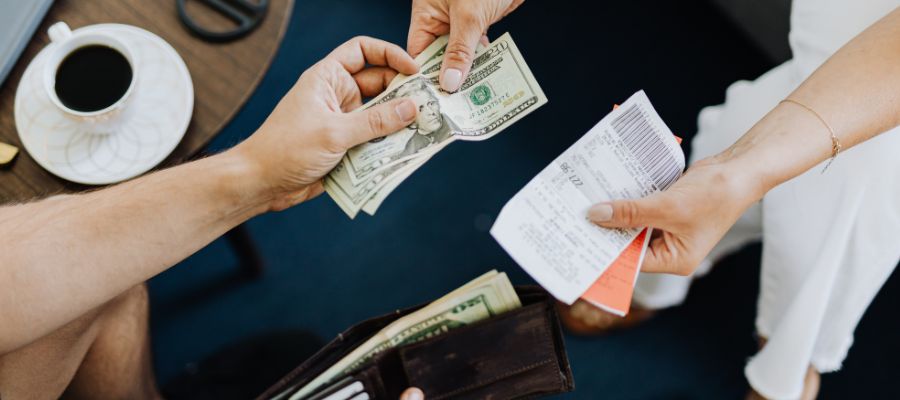
Counterfeit bills have been around nearly as long as the U.S. monetary system itself. While counterfeit money directly impacts American consumers and businesses, its effects are also felt globally because the U.S. dollar is recognized and accepted worldwide. The problem? Counterfeit bills aren’t always easy to spot.
How can I detect counterfeit money?
The best way to determine whether a note is genuine is to rely on the security features such as, but not limited to, the watermark and security thread. A counterfeit note cannot be exchanged for a genuine one, and it is illegal to knowingly pass counterfeit currency.
1. Does the bill feel like fabric or paper? If paper, then it needs further examination and could be counterfeit. Bills are made out of 75% cotton and 25% linen which makes them feel like fabric and not paper.
2. Tilt the note back and forth to observe the color-shifting ink.

3. Check the watermark against light. It is visible from both sides.
For $10, $20, $50, and $100 bills, the watermark matches the portrait on the face of the bill.

For $5 bills, the watermark looks like this:

Counterfeiters will wash out $1 and $5 bills, then print over them to make them look like real $100 bills. If you hold up your $100 and it has the watermark of a $5 bill, it is only worth $5.
4. Check the security strip. A $100 bill has a pink security strip, $50 has yellow, $20 has green, $10 has orange.

What is the most popular counterfeit bill?
In 2024, $30 million in counterfeit money was passed in the U.S. alone. There are seven denominations of bills in circulation today: $1, $2, $5, $10, $20, $50, and $100. The most counterfeited bill in the U.S. is the $20 bill and the second most is the $100 bill.
If you live in the U.S., what should you do if you think you have received a counterfeit note?
- Don’t return the bill or pass it on.
- Take a mental note of who gave you the bill or where you received it.
- Handle the bill on its edges and place it in an envelope to avoid further handling. Write down the date and time that you discovered it.
- Contact the local police department.
Counterfeit currency continues to pose a risk to consumers and businesses alike. By learning how to recognize the security features of legitimate bills and staying alert to common red flags, you can help protect yourself and others from financial loss. Knowing your money is the first step in safeguarding it.
For more information on bills and their security features, visit: https://www.secretservice.gov/sites/default/files/reports/2020-12/KnowYourMoney.pdf






